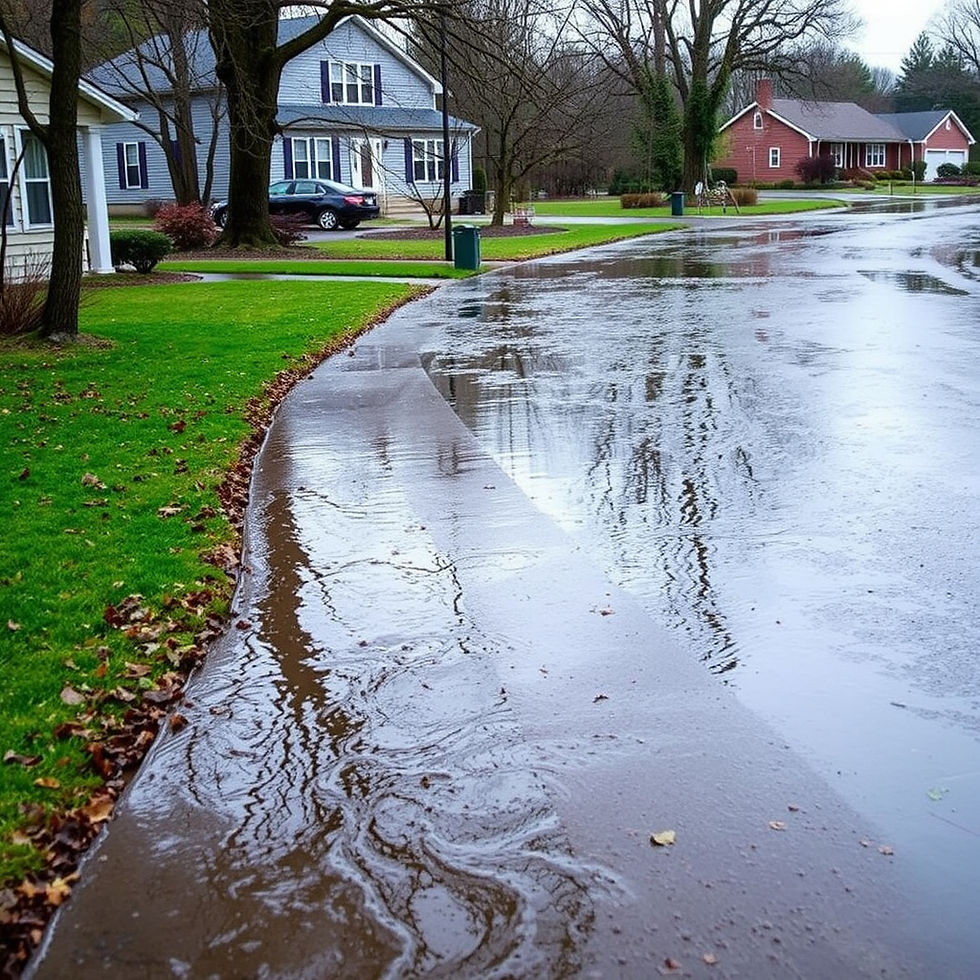Everything You Need to Know About Composition Roofs
- Jayant Upadhyay
- Feb 13
- 4 min read
Updated: Mar 5

A composition roof, also known as a composite roof, is one of the most popular roofing choices for residential and commercial buildings. Made from a combination of materials such as asphalt, fiberglass, and recycled paper products, composition roofs offer durability, affordability, and aesthetic appeal. In this comprehensive guide, we’ll explore the benefits, types, installation process, maintenance tips, and cost considerations of composition roofing.
What Is a Composition Roof?
A composition roof is a type of roofing system made from multiple materials, typically including asphalt, fiberglass, and mineral granules. These materials are compressed and bonded together to create durable shingles. Unlike traditional wood or slate roofs, composition roofs are designed to provide excellent weather resistance and require minimal maintenance.
Benefits of a Composition Roof
1. Durability and Longevity
Composition roofs can last anywhere from 20 to 50 years, depending on the quality of materials and proper maintenance. They are resistant to various weather conditions, including rain, snow, wind, and hail.
2. Affordability
Compared to metal, slate, or tile roofs, composition roofing is a cost-effective option. It provides a good balance between durability and cost, making it a preferred choice for many homeowners.
3. Variety of Styles and Colors
Composition shingles come in a wide range of colors, textures, and styles, allowing homeowners to match their roof with their home’s exterior design. They can even mimic the look of slate, wood, or tile without the high price tag.
4. Easy Installation
Unlike some roofing materials that require specialized installation, composition shingles are relatively easy to install. This reduces labor costs and makes them a convenient option for both new constructions and roof replacements.
5. Low Maintenance
Composition roofs require minimal upkeep. Regular inspections and minor repairs can help extend their lifespan, but they do not demand frequent or expensive maintenance.
6. Fire and Algae Resistance
Many composition shingles are treated with fire-resistant and algae-resistant coatings, making them a safer and more durable choice for homes in humid or wildfire-prone areas.
Types of Composition Roofing
There are three main types of composition shingles:
1. 3-Tab Asphalt Shingles
These are the most basic and affordable type of composition roofing. They have a simple design with three uniform cutouts, giving them a flat, even appearance. They typically last around 20-30 years and are a popular choice for budget-conscious homeowners.
2. Architectural (Dimensional) Shingles
Architectural shingles are a step up from 3-tab shingles in both durability and appearance. They have a layered, textured look that mimics high-end materials like wood or slate. They are thicker and more resistant to weather damage, with a lifespan of 30-50 years.
3. Luxury (Designer) Shingles
Luxury shingles are the highest-quality composition shingles available. They offer the most realistic appearance of natural materials and provide superior durability. They are more expensive but can last over 50 years with proper care.
Installation Process of Composition Roofing
Installing a composition roof involves several key steps:
1. Removing the Old Roofing Material
If replacing an existing roof, the old shingles must be removed to prepare the surface for new installation.
2. Installing Underlayment
A protective underlayment, such as roofing felt or synthetic materials, is placed over the roof deck to provide an additional layer of protection against moisture.
3. Laying Starter Shingles
Starter shingles are installed along the roof edges to provide a secure base for the rest of the shingles.
4. Installing Composition Shingles
Shingles are laid in an overlapping pattern, secured with nails and adhesive strips, ensuring they are properly aligned and sealed.
5. Adding Ridge Cap Shingles
Ridge cap shingles are installed at the roof peak to provide extra protection against wind and water penetration.
6. Final Inspection and Cleanup
After installation, a thorough inspection is conducted to ensure proper installation. Any debris is cleared, and gutters are checked for any obstructions.
Maintenance Tips for a Composition Roof
To extend the lifespan of a composition roof, regular maintenance is essential. Here are some tips:
Inspect Your Roof Annually: Check for missing, cracked, or curling shingles.
Clean Gutters and Downspouts: Prevent water buildup that can lead to leaks or structural damage.
Remove Debris: Keep the roof free of leaves, branches, and moss to prevent moisture retention.
Address Algae and Mold Growth: Use a mild cleaning solution or professional cleaning services if needed.
Repair Damaged Shingles Promptly: Replace any broken or loose shingles to prevent leaks.
Cost Considerations of a Composition Roof
The cost of a composition roof varies based on factors such as the type of shingles, roof size, location, and labor costs.
Average Costs:
3-Tab Shingles: $2.50 – $5.50 per square foot
Architectural Shingles: $4.00 – $7.50 per square foot
Luxury Shingles: $6.00 – $12.00 per square foot
Additional Costs:
Labor: Typically accounts for 50-60% of the total cost
Underlayment and Materials: Adds to overall expenses
Roof Pitch and Complexity: Steeper and more intricate roofs require additional labor and safety measures
Composition Roof vs. Other Roofing Materials
Feature | Composition Roof | Metal Roof | Slate Roof | Wood Shingles |
Lifespan | 20-50 years | 40-70 years | 75-100 years | 30-50 years |
Cost | $$ | $$$ | $$$$ | $$$ |
Maintenance | Low | Low | Medium | High |
Durability | High | Very High | Very High | Moderate |
Fire Resistance | High | Very High | High | Low |
Conclusion
A composition roof is an excellent choice for homeowners seeking a balance between affordability, durability, and aesthetic appeal. With various styles and quality options available, composition shingles can cater to different budget levels while offering long-lasting protection. Regular maintenance and proper installation will ensure that your composition roof remains in great condition for decades. Whether you’re building a new home or replacing an old roof, composition roofing is a smart investment that delivers both functionality and curb appeal.



Comments